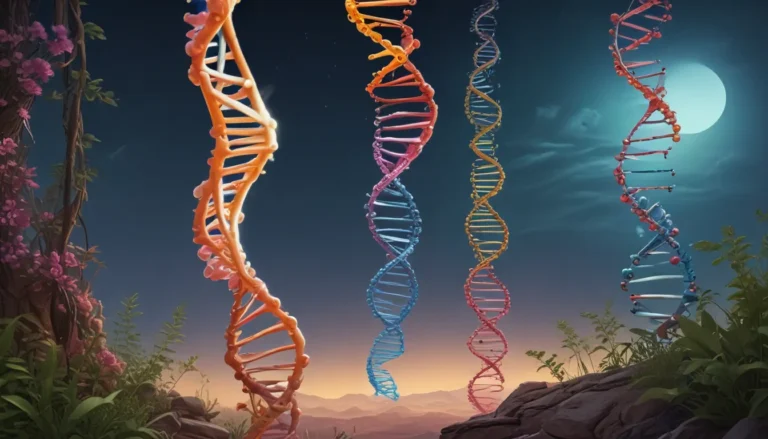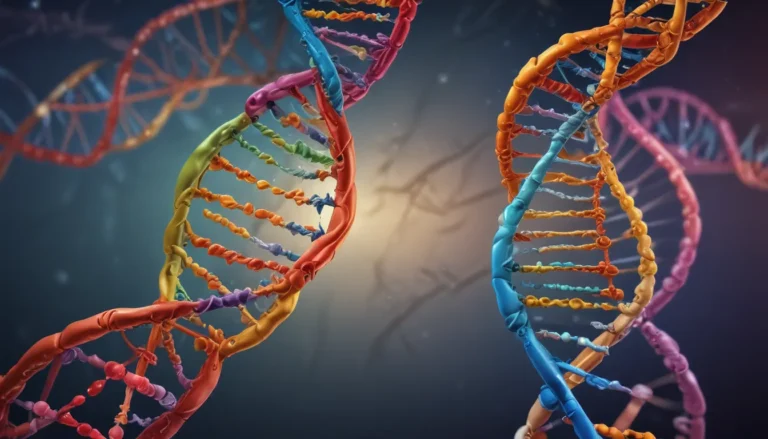A Note About Images: The images used in our articles are for illustration purposes only and may not exactly match the content. They are meant to engage readers, but the text should be relied upon for accurate information.
Welcome to the world of biogeochemical cycles, where the intricate dance of essential nutrients shapes the very fabric of life on Earth. From the bustling carbon cycle to the vital nitrogen conversions, these cycles are the lifeblood of ecosystems, sustaining flora and fauna alike. Join us on a journey as we uncover 20 astounding facts about the biogeochemical cycle, shedding light on its importance, complexities, and the impact of human intervention on this delicate balance.
The Marvel of Nutrient Movement
The biogeochemical cycle serves as a conduit for essential nutrients – carbon, nitrogen, phosphorus, and sulfur – to travel between the atmosphere, living organisms, and the Earth’s geosphere. This flow of elements is fundamental for the growth and sustenance of plants and animals, highlighting the interconnectedness of all life forms on our planet.
Carbon’s Vital Role
At the heart of the biogeochemical cycle lies the carbon cycle, a vital process that involves the exchange of carbon dioxide between the atmosphere and plants through photosynthesis. Through respiration and decomposition, carbon dioxide is released back into the atmosphere, showcasing the dynamic nature of this cycle.
Nitrogen’s Transformation
The nitrogen cycle plays a crucial role in converting atmospheric nitrogen into forms that are usable by plants and other organisms. Nitrogen fixation, carried out by specialized bacteria, enables the conversion of nitrogen into forms that can support the growth and development of various life forms.
Phosphorus’s Nourishing Journey
Essential for plant growth, phosphorus undergoes a cycle through soil, water, and living organisms. This movement enables plants to uptake phosphorus for their development, emphasizing the indispensable role of this nutrient in sustaining life.
Sulfur’s Atmospheric Dance
Sulfur compounds, released through natural events like volcanic eruptions and human activities such as industrial processes, play a crucial role in atmospheric processes. Some sulfur compounds are converted into sulfate and integrated into soil, while others return to the atmosphere, showcasing the dynamic nature of the sulfur cycle.
The Water Cycle Connection
Intimately linked with the biogeochemical cycle, the water cycle facilitates the movement of water through evaporation, condensation, and precipitation. This cycle enables the transport of dissolved nutrients, contributing to the intricate web of nutrient exchange in ecosystems.
Human Impact on the Cycle
Human activities, including deforestation, burning fossil fuels, and excessive fertilizer use, can disrupt the natural balance of the biogeochemical cycle. These disruptions can lead to environmental issues like climate change and nutrient pollution, underscoring the importance of understanding and protecting this delicate system.
Climate Regulation by Nutrient Cycles
The exchange of greenhouse gases within the biogeochemical cycle plays a significant role in regulating Earth’s climate. Gases like carbon dioxide and methane influence the planet’s temperature and weather patterns, highlighting the interconnected relationship between nutrient cycles and climate dynamics.
Organisms as Cycle Participants
From nitrogen-fixing bacteria to decomposers, organisms of all sizes play a crucial role in nutrient cycling within various habitats and ecosystems. Their interactions and contributions are essential for maintaining the balance of nutrients and supporting diverse forms of life.
Dynamic Interconnected System
The biogeochemical cycle operates as a dynamic, interconnected system where different cycles interact and depend on each other. This complex web of interconnections creates a network of feedback mechanisms that sustain the delicate balance of nutrients in ecosystems.
Temporal Scales of the Cycle
The biogeochemical cycle can occur over varying time scales, from rapid carbon dioxide uptake and release by plants to the slow weathering of rocks and minerals. This temporal diversity highlights the multifaceted nature of nutrient cycling within Earth’s ecosystems.
Microbial Role in Nutrient Cycling
Microorganisms, including bacteria and fungi, play a pivotal role in nutrient cycling through processes like nitrogen fixation, nitrification, denitrification, and decomposition. Their activities contribute to the efficient cycling of nutrients and the maintenance of ecosystem health.
Climate Change Impacts on the Cycle
Climate change, with its changes in temperature, precipitation patterns, and carbon dioxide levels, can alter the rates and patterns of nutrient cycling in ecosystems. These shifts highlight the vulnerability of nutrient cycles to environmental changes and emphasize the need for conservation efforts.
Biodiversity Support by Nutrient Cycles
By providing essential nutrients to diverse organisms, the biogeochemical cycle supports biodiversity in various ecosystems around the world. This intricate web of nutrient exchange sustains a wide array of species and contributes to the richness of life on Earth.
Ocean Chemistry Influences
The exchange of carbon and other elements between the atmosphere and the oceans influences the pH and chemical composition of seawater. These changes impact marine life and underscore the interconnected nature of nutrient cycles across different environmental systems.
Human Interventions for Cycle Restoration
Efforts such as reforestation, sustainable farming practices, and emissions reduction can help restore and enhance the balance of the biogeochemical cycle. These interventions aim to mitigate the impacts of human activities on nutrient cycles and promote a healthier environment.
Geological Significance of the Cycle
Over long periods, the movement of elements through the biogeochemical cycle contributes to the formation of minerals, rocks, and fossil fuels of geological importance. These processes highlight the intricate connections between nutrient cycling and Earth’s geological history.
Weathering Processes and Element Release
Chemical and physical weathering of rocks play a key role in releasing essential elements like phosphorus into the soil. These released elements are then taken up by plants, contributing to the cycle of nutrient exchange and ecosystem functioning.
Essence of the Biosphere
From microscopic interactions to global dynamics, the biogeochemical cycle shapes the functioning of Earth’s biosphere. This fundamental aspect of nutrient cycling underscores the interconnected relationships that sustain life on our planet.
Environmental Stewardship Through Cycle Understanding
Understanding the intricacies of the biogeochemical cycle is essential for environmental stewardship. By gaining insights into these processes, we can make informed decisions and take actions to protect and sustain Earth’s delicate balance of nutrients and resources.
Wrapping Up the Journey
In conclusion, the biogeochemical cycle stands as a remarkable process that defines the delicate balance of Earth’s ecosystems. Through the cycling of essential elements and nutrients, the interconnectedness of all life forms is vividly portrayed, underscoring the importance of preserving this intricate system. By delving deeper into the complexities of these cycles, we can unravel the impacts of human activities and work towards sustainable solutions to safeguard our environment for future generations.
FAQs
- What is the biogeochemical cycle?
-
The biogeochemical cycle refers to the flow and recycling of essential elements and nutrients between living organisms, the atmosphere, the hydrosphere, and the lithosphere.
-
Why is the biogeochemical cycle important?
-
The biogeochemical cycle is vital, as it controls the availability of essential elements and nutrients, regulates climate patterns, supports ecosystem functions, and sustains life on Earth.
-
What are the main components of the biogeochemical cycle?
-
The main components include the atmosphere, lithosphere, hydrosphere, living organisms, and the processes enabling the cycling of elements like carbon, nitrogen, phosphorus, and oxygen.
-
How do human activities affect the biogeochemical cycle?
-
Human activities such as deforestation, burning fossil fuels, and excessive fertilizer use can disrupt the biogeochemical cycle, leading to imbalances in nutrient cycles, increased greenhouse gas emissions, and environmental degradation.
-
How can we promote a healthier biogeochemical cycle?
- Practicing sustainable land and water management, reducing pollution and waste, conserving natural resources, and adopting eco-friendly practices in agriculture, industry, and transportation can help promote a healthier biogeochemical cycle.
Delving into the wonders of biogeochemical cycles opens a window into the intricate workings of Earth’s lifeline. By appreciating the interconnectedness of nutrient cycling and the delicate balance it maintains, we can strive to become better stewards of our environment. Join us in this journey of exploration and discovery, as we unravel the marvels of biogeochemical cycles and illuminate the path to a sustainable future.






